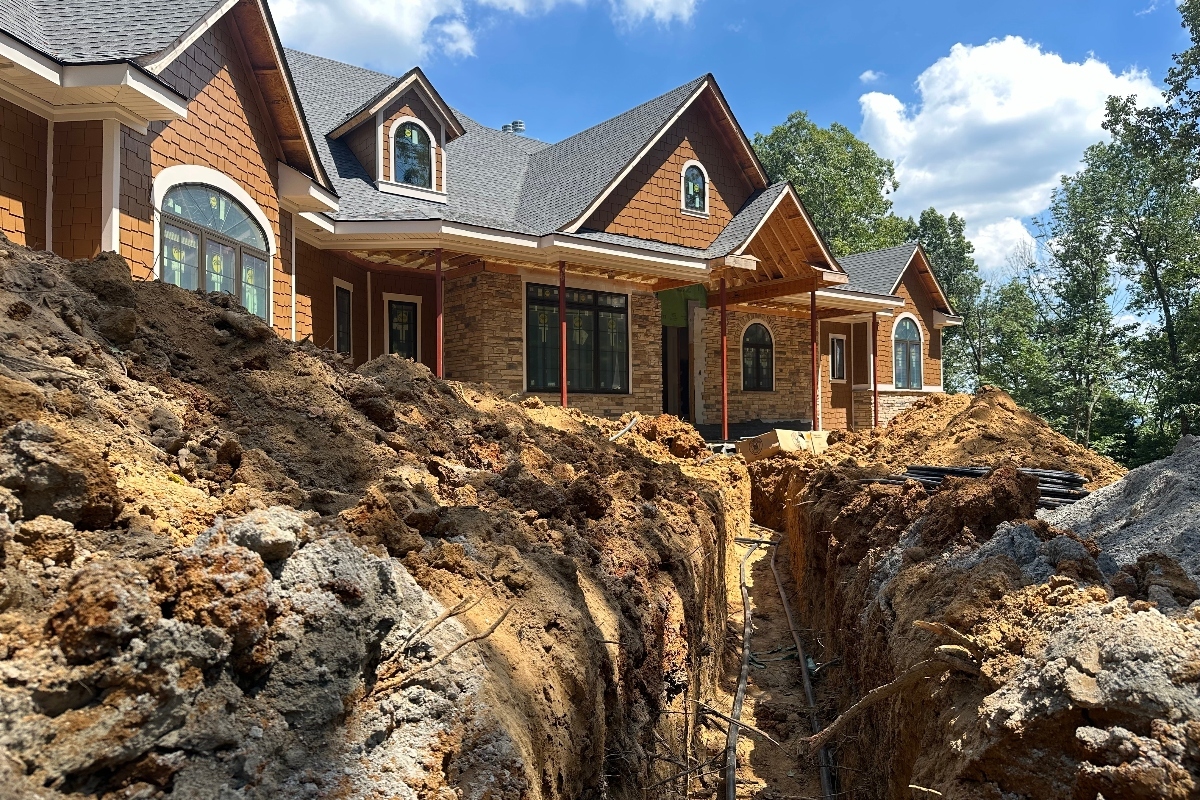
Switching to a ground source heat pump (GSHP) is one of the smartest ways to future-proof your home and lower your carbon footprint whilst saving a bit of money at the same time. These systems use the natural warmth stored in the ground to heat your home and hot water efficiently and sustainably.
If you’re curious about ground source heat pump installation, this guide will take you through the whole process in plain English. We’ll explain how the systems work, what to expect during installation and how to make sure everything runs smoothly, all whilst sharing a few insider tips from our installation team here at Oakray Renewables.
A quick run through GSHPs and how they work
Imagine your garden as a giant, renewable radiator. Beneath the surface, the earth holds a steady supply of low-level heat. A GSHP captures that heat using buried pipework, then gently boosts it to a usable temperature for your radiators, underfloor heating, and hot water.
There are two main ways we install the ground loop. Both systems are incredibly efficient; it just depends on which best suits your property.
- Horizontal loops: We lay a series of pipes in shallow trenches, usually around one to two metres deep. This option is ideal if you have plenty of outdoor space, like a large lawn or field.
- Vertical boreholes: Where space is limited, we drill narrow, deep boreholes (sometimes 50 to 150 metres down) and lower the pipes vertically. It’s a more complex job but perfect for smaller gardens.
Planning your GSHP installation
Before any digging starts, we begin with a comprehensive survey. This covers two key things.
- Heat loss survey: We look at how much energy your home actually needs. Insulation, window quality and radiator sizes all play a part in making your GSHP perform at its best.
- Ground survey: We assess your outdoor space to decide whether a horizontal loop or vertical bore is the right choice. Soil type and moisture content make a real difference to heat collection.
We always recommend choosing an MCS-certified installer (like us!) to make sure your installation meets UK standards and qualifies for government funding, such as the Boiler Upgrade Scheme, which can give you up to £7,500 towards your GSHP.
What happens during installation?
A ground source heat pump installation is a team effort, but we make it as simple and stress-free as possible. By the end of the process, your home will be ready to enjoy efficient, low-carbon heating for decades to come.
- Groundworks: For horizontal systems, we dig the trenches and lay the looped pipework carefully before backfilling. For vertical bores, specialist drilling rigs create the boreholes for the pipes to be lowered and sealed.
- Heat pump installation: Inside your home, we install the GSHP unit often in a utility room or plant space and connect it to your heating and hot water system.
- Commissioning: Once the system is connected, we test, fine-tune and officially commission it. You’ll get a complete handover so you know exactly how to operate your new renewable heating system.
Bonus tips for a smooth installation
After years of installing heat pumps, we’ve learned a few tricks to keep things running smoothly. If possible, schedule groundworks for a dry period, your garden will thank you.
Also, consider pairing solar or battery storage as it can take your energy independence to the next level. Finally, keep on top of your annual servicing to maintain peak performance and long-term efficiency for years and even decades to come.
Your next step to low-carbon heating
A GSHP is a long-term investment in comfort and sustainability. And with the right planning and a trusted installation team, the process is simpler than most homeowners expect.
At Oakray Renewables, we take care of everything, from surveys and design to installation and aftercare so you can enjoy a hassle-free transition to cleaner, smarter heating.
If you’re ready to explore ground source heat pump installation, get in touch with our friendly team today. To find out more about different ways you can decarbonise your home, download our guide below.
